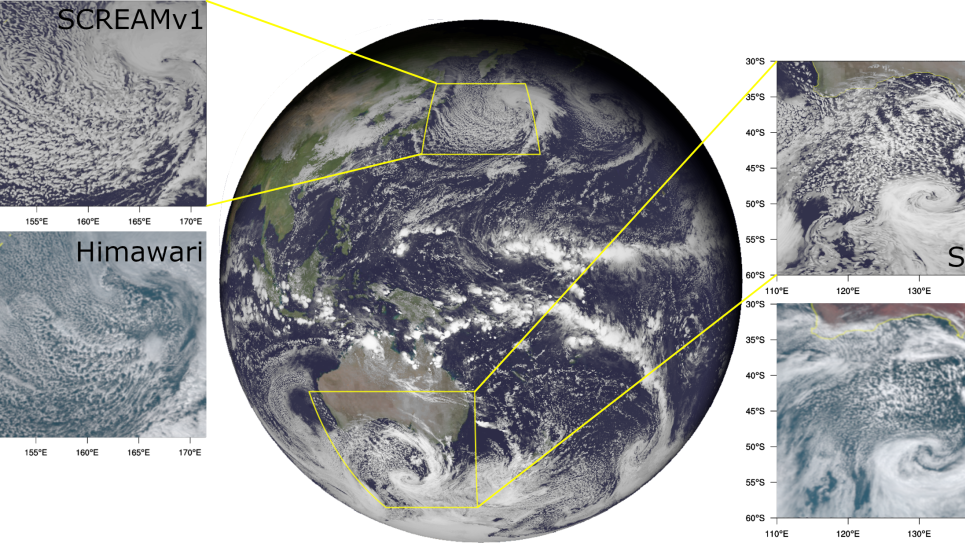
Dual-Multiple-Regional Refined Mesh (RRM) configuration using a GPU-enabled version of the Simple Cloud Resolving E3SM Atmosphere Model Version 1 (SCREAMv1). This configuration includes three distinct horizontal resolutions: Background (0.25⁰), Pacific Ocean (12 km), and U.S. Islands and Western U.S. (3 km). Image: Brandi Gamelin, Argonne National Laboratory


